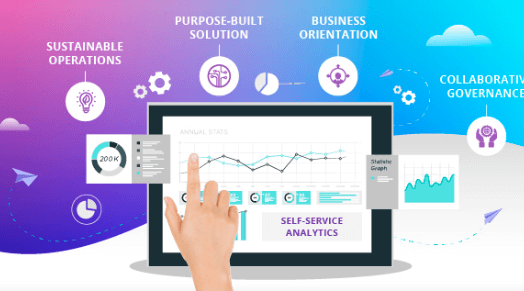In today’s business climate, using data to make quick decisions is a common ask across organizations. To fulfill such asks, business users want more, faster, and better access to data and analytic tools. IT wants to balance this need for speed with the responsibility to protect the data assets from security, privacy, and quality risks. A common solution to this scenario is self-service analytics which has been around for at least two decades. Yet, today’s needs cannot be fulfilled by yesterday’s solutions.
Over the last decade, people have become more data savvy, and technology companies are constantly innovating and changing narratives in a highly competitive environment by introducing new tools. But to achieve self-service nirvana, customers must think beyond business intelligence tools. Through our recent webinar and a series of related blogs, we offer our point of view on the “New Self-Service Analytics” based upon our firm’s 15-year history and recent research and experimentation done within our Centers of Excellence.
Demystifying Self-Service Analytics
Self-service means different things to different people. To level set what “self-service” really means in the industry, we need to consider answers to three questions.
The first question is WHAT does self-service do? The goal of self-service is to make it easier for anyone to do any number of things for the end user across the data-to-decision lifecycle. For example, starting from using tools for reporting, to exploration, or to even advanced use cases like mashing-up and wrangling with data sets. Another key element is to CO-OPT users to do more on their part in that cycle.
The second question is WHY are we doing self-service analytics? There are multiple value drivers across the industry such as – reducing the time-to-decision, transferring labor effort from IT to business, or empowering employees to play with the data and generate their own insights. Ultimately, self-service is about increasing the overall productivity in your ecosystem.
Finally, what is the CONTEXT of the self-service? Is it for the consumer of analytics or for its developer? Is it for an individual or for a team? Most practitioners naturally think in terms of “users”. But there is another concept about making business units in large organizations “self-sufficient”. That is where the scale of self-service analytics gets interesting and challenging.
Challenges with Self-Service Analytics
In a typical organization, operational business units deal with today’s pressures. For example, most customers are responding to the public health, financial, and competitive challenges in the market. On the other hand, IT organizations must not only support business units with today’s operational needs, but also balance legacy systems operations with the pace of technology and data growth. The quest for self-service analytic solutions in this situation results in some interesting challenges for both business and IT.
The Business Perspective
The first challenge the desire to standardize around enterprise tools. As business users become more mobile across organizations, they often want to bring their own tools. If a user is comfortable taking data and using Excel to do the analysis, what’s wrong in it? Should IT allow the user to use Excel or not?
Another challenge is with data comprehension. IT understands where data is stored and in what format, but end users often question if all the data exists and when they do see it, sometimes the way data is coded may not make sense to them. Since the data is growing rapidly, it is very difficult for new users to get a handle on the universe of data sets that exist in their organization.
Lastly, more often than not, sufficient time is not given to discovery. So, needs become wants, and soon business users start demanding features rather than expressing what problem they are facing. And IT may or may not persist with them to dig deeper and might just give in with a self-service tool.
The IT Perspective
But provisioning a tool is not enough. IT also needs more time from business for successful user adoption. None of the BI tools in the market, regardless of their claims, is 100% user friendly. Users need some level of support.
Another implication of legacy systems is about organizational inertia. The new folks in an organization want to modernize systems, and old guards want to rationalize the choices made in the past. The reality is we need the best of both worlds for any successful modernization. So, the perpetual modernization cycle tied to inertia creates more challenges in terms of lack of necessary skills for today’s needs.
Moving Beyond Tools
Breaking through these challenges requires more soft skills than technical skills. We feel it is time to revisit how IT and business collaborate and how self-service analytics are designed to deliver sustainable results. Through our next blog, we will offer a new paradigm for achieving better self-service outcomes and provide recommendations for making progress in different situations.
On Demand Webinar
Slides






